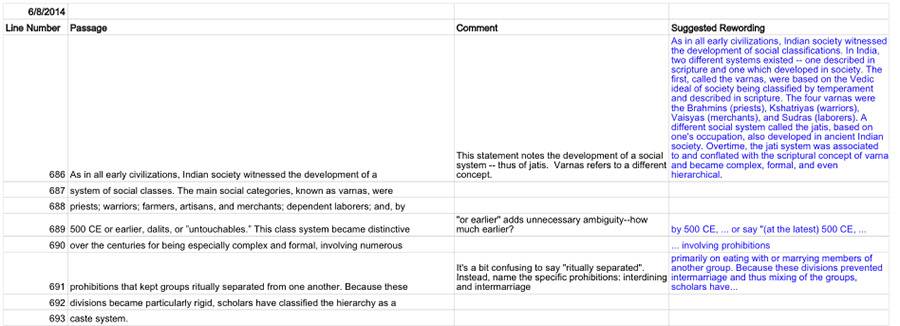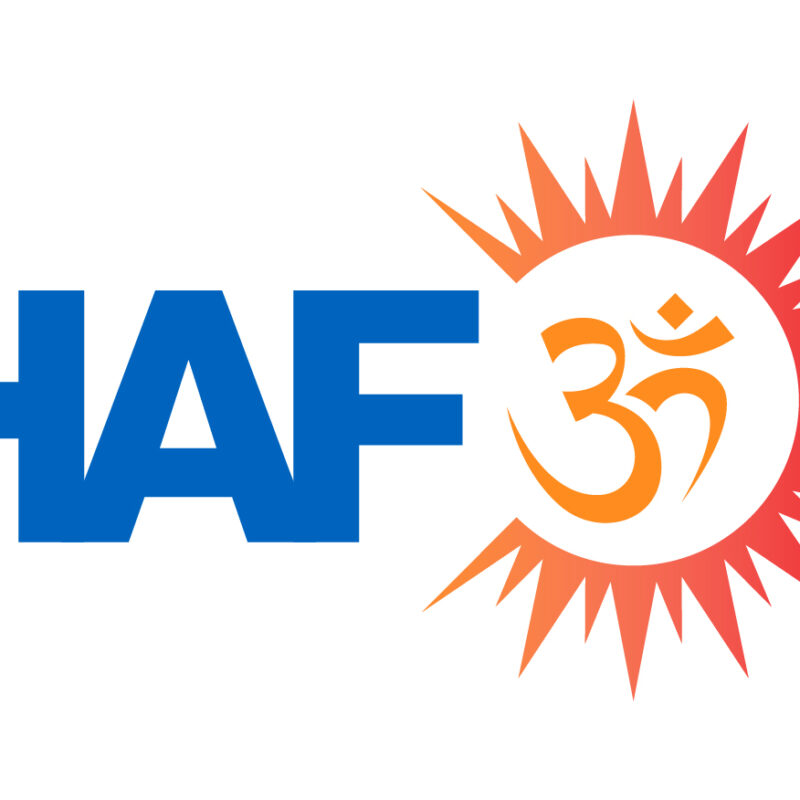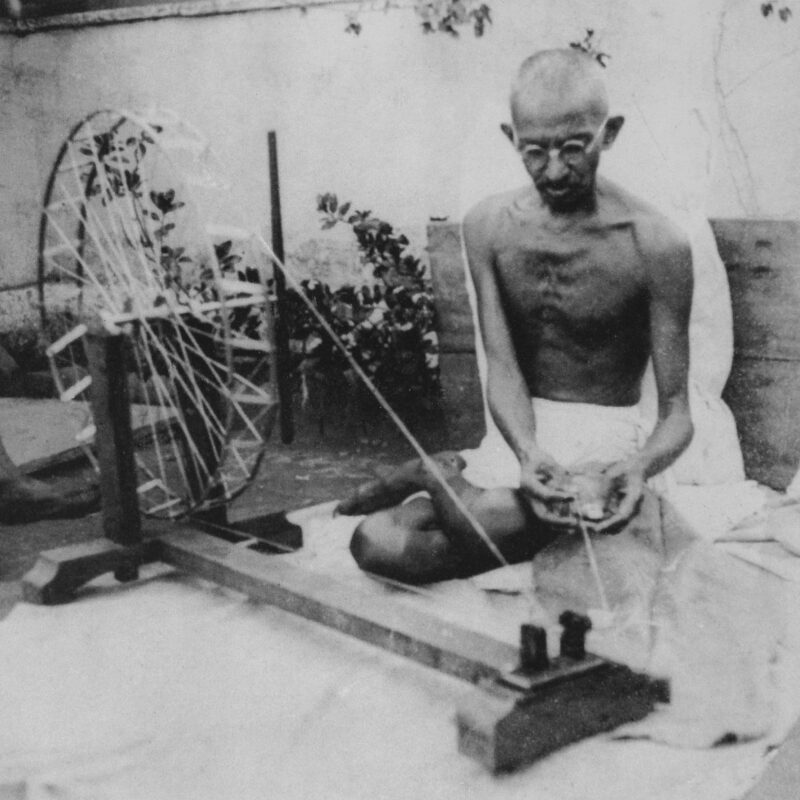
In the month leading up to last week’s Instructional Quality Commission meeting, the Hindu American Foundation was repeatedly accused on social media by some activists that HAF had specifically requested the word ‘Dalit’ be removed from the California textbook frameworks. An image was circulated on Twitter (copied below) showing the passage in question, connecting it with an email submission from HAF Director of Education and Curriculum Reform Murali Balaji and HAF Executive Director Suhag Shukla, with the entire passage reproduced with strikethrough text and the word ‘Dalit’ circled. It was made to appear that HAF itself wanted to quite literally strike out Dalits.
As with the case of our powerpoint presentation on the history of caste and efforts to eliminate discrimination based on caste, social media posts have been based on a misrepresentation of HAF’s actions and intent.
There is some discrepancy in numbering because the CDE staff compile all the comments received, but the content of the passage in question is in lines 686-693 of the PDF titled “Frameworks2014-Round1CommentsHAF”. The screenshot below is of the lines from that document.
For clarity, the original section in question reads:
“As in all early civilizations, Indian society witnessed the development of a system of social classes. The main categories, known as varnas, were priests; warriors; farmers, artisans, and merchants; dependent laborers; and by 500 CE or earlier, dalits, or “untouchables.”…”
HAF commented, on the first section: “This statement notes the development of a social system — thus of jatis. Varnas refers to a different concept;” on the middle section, immediately preceding the mention of “dalit,” “‘or earlier’ adds unnecessary ambiguity — how much earlier?”
HAF suggested rewording of the first section focused on making clear the distinction between varna and jati: “As in all early civilizations, India society witnessed the development of social classifications. In India two different systems existed — one described in scripture and one which developed in society. The first, called the varnas, were based on the Vedic ideal of society being classified by temperament and described in scripture. The four varnas were the Brahmins (priests), Kshatriyas (warriors), Vaishyas (merchants), and Sudras (laborers). A different social system called the jatis, based on one’s occupation, also developed in ancient Indian society. Overtime, the jati system was associated to and conflated with the scriptural concept of varna and became complex, formal, and even hierarchical.”
As for HAF’s suggested rewording of the middle section, absolutely no elimination of the word ‘dalit’ exists. The suggested rewording is simply to eliminate the words “or earlier,” replacing them either with “by 500 CE” or by “(at the latest) 500 CE.” No erasing Dalits. No erasing of history. None.
The words behind the strikethrough are those of HAF, but where the strikethrough version of this document originates we cannot say. At no time has HAF asked for the removal of mention of Dalits from the frameworks. It is possible that the Subject Matter Committee added strikethrough in that passage to highlight our suggested rewordings. However, as should be clear from HAF’s submission on record, none of the changes suggested by HAF actually involved the word Dalit.
To restate HAF’s position: Caste discrimination is a grave social problem, one which we have consistently condemned and one which should be countered whenever and wherever it occurs. Such discrimination occurs today not only in the Hindu community, but also in Buddhist, Christian, Jain, and Sikh communities throughout the Indian subcontinent. Caste discrimination is in direct contradiction to the eternal and essential Hindu teachings found in shruti (Vedas, Upanishads, etc.) that each individual is equally divine and has the potential to realize God based on their own effort.
Read more: Hinduism Not Cast in Caste | Statements against caste-based discrimination by leading Hindu spiritual teachers










































